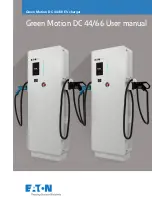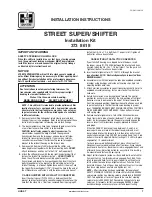
tentionally. For this reason, never make any
modifications to the restraint systems.
Therefore, you must not tamper with elec-
tronic components or their software.
SRS (Supplemental Restraint System)
Introduction
SRS consists of:
R
the
6
SRS warning lamp
R
airbags
R
airbag control unit (with crash sensors)
R
belt tensioners
R
belt force limiters
SRS reduces the risk of occupants coming
into contact with the vehicle's interior in the
event of an accident. It can also reduce the
effect of the forces to which occupants are
subjected during an accident.
SRS warning lamp
SRS functions are checked regularly when
you switch on the ignition and when the
engine is running. Therefore, malfunctions
can be detected in good time.
The
6
SRS warning lamp in the instrument
cluster lights up when the ignition is switched
on. It goes out no later than a few seconds
after the engine is started.
G
WARNING
If SRS is malfunctioning, individual systems
may be triggered unintentionally or might not
be triggered in the event of an accident with
a high rate of vehicle deceleration.
A malfunction has occurred if:
R
the
6
SRS warning lamp does not light
up when the ignition is switched on.
R
the engine is running and the
6
SRS
warning lamp does not go out after a few
seconds.
R
the engine is running and the
6
SRS
warning lamp lights up again.
In this case, have SRS checked immediately
at a qualified specialist workshop.
Triggering of belt tensioners, belt force
limiters and airbags
During the first stage of a collision, the airbag
control unit evaluates important physical
data relating to vehicle deceleration or accel-
eration, such as:
R
duration
R
direction
R
magnitude
Based on the evaluation of this data, the air-
bag control unit pre-emptively triggers the
belt tensioners in the first stage.
i
The front belt tensioners can only be trig-
gered if the seat belt tongues on the front
seats are correctly engaged in the seat belt
buckles.
If there is an even higher rate of vehicle decel-
eration or acceleration in a longitudinal direc-
tion, the front airbags are also deployed.
Your vehicle has adaptive, two-stage front air-
bags. The airbag control unit evaluates vehi-
cle deceleration or acceleration in the event
of a collision. In the first deployment stage,
the front airbag is filled with enough propel-
lant gas to reduce the risk of injuries. The
front airbag is fully deployed if a second
deployment threshold is exceeded within a
few milliseconds.
The belt tensioner and airbag triggering
thresholds are variable and are adapted to the
rate of deceleration or acceleration of the
vehicle. This process is pre-emptive in nature.
The triggering process must take place in
good time at the start of the collision.
i
Airbags are not deployed in all types of
accidents. Also, not all airbags are
deployed together in an accident. The dif-
ferent airbag systems work independently
of each other.
Occupant safety
43
Safety
Z
Содержание E-Class 2011
Страница 2: ......
Страница 3: ......
Страница 5: ......
Страница 43: ...40 ...
Страница 83: ...80 ...
Страница 105: ...102 ...
Страница 155: ...152 ...
Страница 231: ...228 ...
Страница 291: ...288 ...
Страница 292: ...Useful information 290 Loading guidelines 290 Stowage areas 290 Features 307 289 Stowing and features ...
Страница 322: ...Useful information 320 Engine compartment 320 Maintenance 325 Care 326 319 Maintenance and care ...
Страница 337: ...334 ...
Страница 381: ...378 ...
Страница 405: ...402 ...
Страница 406: ...403 ...
Страница 407: ...404 ...
Страница 408: ......
Страница 409: ......
















































